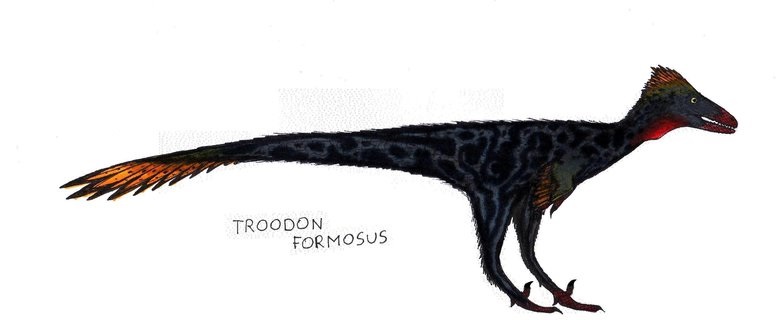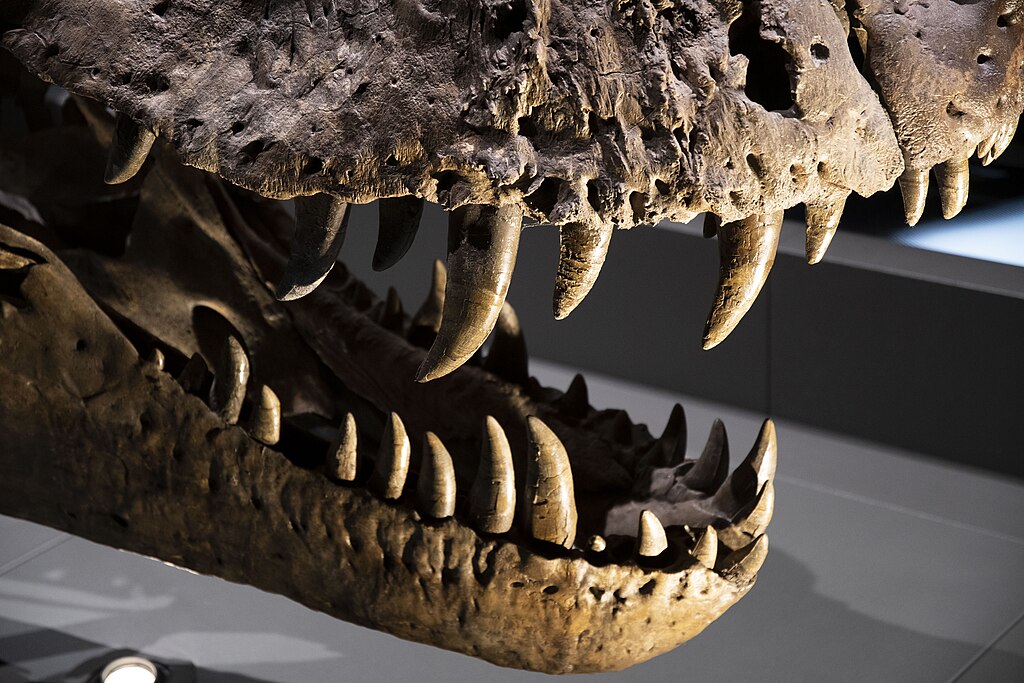For decades, paleontologists have been piecing together clues about dinosaur intelligence from fossil remains, comparative anatomy, and behavioral analysis. While intelligence is difficult to measure in living animals, let alone creatures extinct for 66 million years, scientists have developed methods to make reasonable estimations about cognitive abilities in dinosaurs. The question of which dinosaur was the smartest has intrigued both researchers and dinosaur enthusiasts alike. Recent scientific consensus points to a surprising answer that challenges many popular assumptions about dinosaur intelligence. By examining brain case structure, body-to-brain ratios, and evolutionary relationships to modern birds, researchers have been able to identify the likely candidates for the title of “smartest dinosaur.”
How Scientists Measure Dinosaur Intelligence

Determining intelligence in extinct species requires creative scientific approaches. Paleontologists primarily rely on endocasts—molds of the interior of the braincase that reveal brain size and structure. They calculate the encephalization quotient (EQ), which compares brain size to body size. Higher EQs generally suggest greater intelligence. Scientists also examine brain regions associated with higher cognitive functions, such as the cerebrum. Additionally, they study bone structure for evidence of complex behaviors and social interactions. Comparisons with living relatives, particularly birds (which are technically avian dinosaurs), provide further insights into dinosaur cognitive abilities. These methods, while imperfect, offer our best window into the intellectual capabilities of creatures from the distant past.
Troodontids: The Brainiest Dinosaurs

The family Troodontidae consistently emerges as containing the most intelligent dinosaurs in scientific research. These small, bird-like theropods possessed the highest encephalization quotients among all dinosaurs, with brain-to-body ratios comparable to some modern birds. Troodontids had large, well-developed cerebral hemispheres, suggesting advanced problem-solving abilities. Their brain structure featured expanded regions for processing sensory information, particularly vision. Most troodontids were relatively small, with Troodon formosus typically weighing around 50 kg, demonstrating that sophisticated intelligence often evolves in smaller-bodied species rather than giants. Their forward-facing eyes provided stereoscopic vision, a trait associated with predators requiring precise depth perception and spatial awareness—cognitive skills that demand significant brain power.
Troodon: The Prehistoric Genius

Among troodontids, Troodon formosus stands out as potentially the most intelligent dinosaur that ever lived. This turkey-sized predator had an estimated EQ of 5.8, remarkably high for a dinosaur and comparable to some modern birds. Discovered in 1856, Troodon’s name means “wounding tooth,” referencing its distinctive serrated teeth. Its brain size relative to its body weight was among the highest of any dinosaur, with a particular enlargement of the cerebrum—the area associated with higher thinking. Troodon had large eyes that likely provided excellent night vision, suggesting complex hunting behaviors in low-light conditions. Some paleontologists have speculated that had the K-Pg extinction event not occurred, troodontids like Troodon might have evolved even greater intelligence, potentially developing tool use or other advanced cognitive abilities.
Dromaeosaurids: The Clever Pack Hunters

Closely related to troodontids, dromaeosaurids (often called “raptors”) rank high on the dinosaur intelligence scale. This family includes Velociraptor, Deinonychus, and Utahraptor, predators known for their curved claws and likely pack-hunting behaviors. Brain studies indicate dromaeosaurids possessed expanded cerebral hemispheres and optic lobes, suggesting advanced vision and processing capabilities. Their predatory lifestyle required sophisticated spatial awareness, strategic thinking, and possibly complex social coordination. Evidence from fossil sites showing multiple individuals preserved together supports theories of cooperative hunting strategies. The famous “fighting dinosaurs” fossil, showing a Velociraptor locked in combat with a Protoceratops, demonstrates the aggressive hunting techniques these dinosaurs employed—behaviors that would require significant cognitive abilities to execute successfully.
Comparing Dinosaur Brains to Modern Animals

When researchers compare dinosaur intelligence to modern animals, they find that the smartest dinosaurs likely had cognitive abilities similar to modern birds and some mammals. Troodon’s EQ places it in the range of modern ostriches and emus, while dromaeosaurids compare favorably with some carnivorous mammals. However, even the most intelligent dinosaurs probably didn’t reach the cognitive levels of corvids (crows and ravens) or primates. Brain architecture in theropods shows evolutionary trends toward the avian condition, with expanded cerebrums and reduced olfactory bulbs. The cerebellum, responsible for motor control, was well-developed in many theropods, suggesting refined movement capabilities. Despite these comparisons, it’s important to remember that dinosaur intelligence likely manifested in species-specific ways that might not perfectly align with modern animal cognition.
The Surprising Intelligence of Ornithomimids

Ornithomimids, or “ostrich-mimics,” have emerged as surprisingly intelligent dinosaurs in recent research. These fleet-footed omnivores had relatively large brains for their body size, with EQs higher than many other dinosaur groups. Species like Struthiomimus and Gallimimus possessed expanded cerebral hemispheres, suggesting enhanced cognitive processing capabilities. Their large eyes and visual centers point to heavily vision-based behavior and excellent spatial awareness. Ornithomimids’ omnivorous diet may have required flexible foraging strategies and food-processing techniques, driving the evolution of higher intelligence. Their long-limbed, cursorial (running-adapted) body plan indicates they relied on speed and agility rather than brute strength, a lifestyle that typically correlates with higher cognitive demands for rapid decision-making and environmental navigation.
Theropods vs. Other Dinosaur Groups

Intelligence was not evenly distributed across dinosaur lineages, with theropods (the mainly carnivorous dinosaurs that include Troodon and Velociraptor) consistently showing higher relative brain sizes than other groups. While the average theropod EQ ranged from 0.8 to 2.5, sauropods (long-necked herbivores) typically had EQs below 0.5, and ceratopsians (horned dinosaurs) generally scored between 0.4 and 1.2. Brain structure also differed significantly between these groups. Theropods had proportionally larger cerebral hemispheres, while herbivorous dinosaurs tended to have expanded cerebellums for coordinating their larger bodies but relatively smaller cerebral regions. These differences likely reflect varying ecological pressures, with predatory lifestyles generally demanding higher cognitive capabilities for tracking, pursuing, and capturing prey. However, recent studies have revealed more complex variations in herbivore intelligence than previously recognized, suggesting we should be cautious about overgeneralizing across these diverse groups.
The Role of Predation in Evolving Intelligence

The relationship between predatory lifestyles and increased intelligence appears significant in dinosaur evolution. Predators typically require advanced spatial cognition, memory, strategic thinking, and often social cooperation—all cognitively demanding skills. The sensory processing required to locate, track, and capture prey selects for enhanced neural capabilities. Evidence suggests this pattern held true in dinosaurs, with primarily carnivorous theropods evolving proportionally larger brains than herbivorous groups. This trend is similarly observed in modern ecosystems, where predatory birds and mammals often display greater cognitive flexibility than herbivorous counterparts. However, the relationship isn’t absolute—some predatory dinosaurs had relatively modest brain sizes, while certain herbivores showed unexpected neural complexity. The cognitive demands of avoiding predation also drove intelligence evolution in prey species, creating an evolutionary “arms race” of cognitive capabilities between predators and prey.
Dinosaur Intelligence and Parental Care

Advanced parental care behaviors correlate strongly with higher intelligence in modern animals, and evidence suggests a similar pattern in dinosaurs. Fossil nests of troodontids and oviraptorids preserve adults brooding over eggs, indicating sophisticated parental investment. These same groups rank among the most intelligent dinosaurs based on brain anatomy. Caring for vulnerable offspring requires memory, planning, and behavioral flexibility—all cognitively demanding tasks that select for increased intelligence. Extended periods of juvenile dependency, observed in some dinosaur groups through growth series fossils, would have provided extended learning opportunities crucial for developing complex behaviors. The discovery of adult Maiasaura (a duck-billed dinosaur) fossils with nests of hatchlings suggests some herbivorous dinosaurs also exhibited advanced parental care, potentially indicating higher cognitive abilities than previously assumed in these groups.
Why T. rex Wasn’t the Smartest Dinosaur

Despite its popular culture portrayal as a cunning predator, Tyrannosaurus rex was not among the most intelligent dinosaurs. T. rex had an absolute brain size larger than many dinosaurs, but its encephalization quotient was relatively modest at approximately 2.0—significantly lower than troodontids and dromaeosaurids. Its brain architecture focused heavily on olfactory capabilities and basic motor control rather than advanced problem-solving regions. The gigantic predator likely relied more on its immense physical advantages—powerful jaws, keen sense of smell, and surprising speed—than on complex hunting strategies. However, T. rex wasn’t unintelligent by dinosaur standards; it still ranked above many herbivorous dinosaurs in relative brain size. Recent research suggests juvenile T. rex may have been more intelligent relative to their body size than adults, possibly employing different hunting strategies before reaching full size, which demonstrates how intelligence functioned differently across life stages even within the same species.
The Evolutionary Path to Modern Bird Intelligence

The most intelligent dinosaurs sit directly on the evolutionary pathway leading to modern birds, which include some of the most cognitively sophisticated animals alive today. This evolutionary trajectory shows a consistent trend toward increased encephalization and cerebral expansion. Small-bodied, carnivorous theropods like troodontids and dromaeosaurids represent intermediate stages in this cognitive evolution. As theropods evolved more bird-like characteristics, including feathers, hollow bones, and air sacs, their brains simultaneously developed more avian features. The expanded forebrains, reduced olfactory bulbs, and enhanced visual processing regions seen in late Cretaceous paravians foreshadow modern bird brain organization. This evolutionary lineage eventually produced the remarkable intelligence seen in modern corvids (crows and ravens), parrots, and some water birds, capable of tool use, self-recognition, complex problem-solving, and even rudimentary language comprehension—cognitive abilities that likely began developing in their dinosaurian ancestors.
Could Dinosaurs Have Evolved Human-Level Intelligence?

The question of whether dinosaurs might have evolved human-level intelligence given more time remains speculative but fascinating. The cognitive trajectory of small theropods was certainly trending toward greater intelligence, with significant increases in encephalization quotients over millions of years. Had the K-Pg extinction not occurred, continued evolutionary pressures might have produced even more intelligent dinosaur descendants. However, several factors make human-equivalent intelligence unlikely. Dinosaur brain architecture, while increasingly sophisticated, followed a different organizational pattern than mammalian brains. The ecological pressures faced by dinosaurs also differed from those that drove primate brain evolution. Additionally, the evolution of hands with opposable thumbs—crucial for human tool development—had no clear parallel in theropod evolution, despite their increasingly dexterous forelimbs. Nevertheless, had dinosaurs continued evolving for another 66 million years, they might have produced species with intelligence comparable to the most cognitively advanced birds today, potentially including sophisticated tool use and complex social structures.
Recent Discoveries Changing Our Understanding

Paleontological discoveries in the past decade have significantly refined our understanding of dinosaur intelligence. Advanced CT scanning techniques now allow scientists to create detailed digital models of brain cases without damaging fossils, revealing previously undetectable neural structures. New specimens of Bambiraptor and other small paravians have shown brain structures surprisingly similar to modern birds, suggesting even greater cognitive capabilities than previously estimated. Discoveries in China’s Liaoning Province continue to uncover exceptionally preserved specimens with evidence of complex behaviors, including specimens showing dinosaurs brooding over nests, sleeping in bird-like postures, and possibly even using rudimentary tools. Fossil trackways are also providing insights into social behaviors and hunting strategies that would require significant coordination and intelligence. These ongoing discoveries continuously refine our understanding of dinosaur intelligence, generally supporting the conclusion that small, bird-like theropods—particularly troodontids—represented the cognitive peak of dinosaur evolution.
The quest to identify the smartest dinosaur has led scientists to small, agile predators rather than the gigantic creatures that often capture popular imagination. Troodon and its close relatives stand out as the likely intellectual champions of the Mesozoic world, with brains proportionally similar to those of modern birds. While we’ll never be able to observe a living dinosaur’s problem-solving abilities or social complexity, the evidence from brain cases, body proportions, and evolutionary relationships provides compelling insights into their cognitive capabilities. The intelligence of these prehistoric predators not only helps us understand dinosaur behavior but also illuminates the evolutionary pathway that eventually produced the remarkable intelligence we see in modern birds. As research techniques continue to advance, our understanding of dinosaur intelligence will undoubtedly become even more nuanced, offering new perspectives on these fascinating creatures that dominated Earth for over 160 million years.


